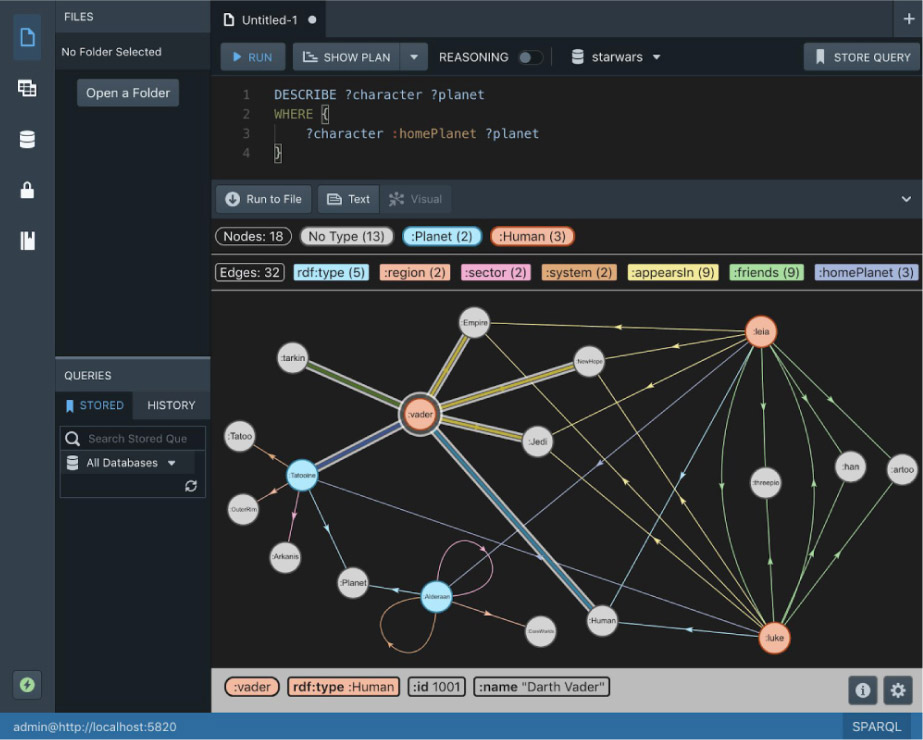Sometimes the answer you need is expressible as a simple fact: What is the social security number of person X? What is the risk factor for investment Y? But in other cases, understanding and using the connectedness of the knowledge graph — using the path from one node to another — is key to finding the answer to your questions. For example, what does the supply chain look like for this batch of troublesome parts? Or, how are these two financial organizations related to these five transactions and these three shadowy political figures?
Stardog Explorer is an intuitive web-based application to browse, search, and query the connections in your data fabric. You can traverse the graph—across materialized and virtualized sources—and find different kinds of paths, even over inferred relationships, where there is not an explicit edge between two nodes but a pattern that links those nodes. There are several ways you can begin your exploration, whether you want to visualize the canvas of your knowledge graph, query for patterns in your data using the Query Builder, or simply type in a search keyword.
Explorer makes it possible to:
- Empower citizen data users to ask complex business questions easily via the semantic layer
- See your data in the context of the business concepts that matter to your use case
- Quickly traverse relationships to identify patterns across data, regardless of its location
- Gain insights on large volumes of data to speed up downstream analytics
With Explorer, you can explore metadata and data, conduct semantic searches, visually build queries using models, and even share your insights with others through share links and exports.
-
LEARN MORE ABOUT EXPLORER
Take the beginner-level Stardog Explorer training, which teaches users how to gain insights that can drive business success. You will learn how to follow your intuition and investigate your data to uncover patterns, dependencies, or unexpected insight using Stardog Explorer. By the conclusion of this training, you will be able to search and query your data, filter results to easily find what you need, and explore related topics visually.

Get started with Stardog now
Start building your Enterprise Knowledge Graph today. Get your 30-day fully featured Trial.
Start today

